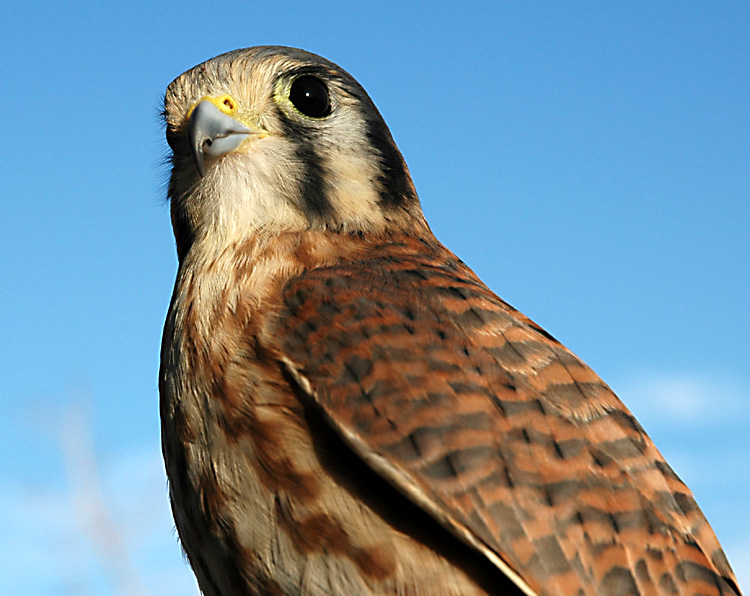
The American Kestrel has a body length of 9 - 12 inches, a wingspan
of 20 - 24 inches, and weighs 3 1/2 - 5 1/2 ounces.
American Kestrels are found throughout most of North, Central, and South America.
They inhabit tropical lowlands, deserts, urban areas, and open-altered lands, such as agricultural fields.
Kestrels feed mainly on crickets, grasshoppers, mice, voles, lizards, and snakes.
This falcon searches for its prey from an overlooking perch or
by hovering in the air.
When the prey is spotted, the kestrel will plunge down to catch it.
Kestrels are cavity nesters, using natural hollows in trees, cacti, dirt banks and cliffs, or man-made boxes, building ledges, and other cavities in buildings.
Females lay 4 - 6 eggs.
The eggs are incubated about 28 days and the young birds fledge about 28 days after hatching. Kestrels are able to reproduce as early as 1 year of age.
The scientific name comes from the Latin word falco, meaning hook-shaped (falcate) and may refer to the beak or claws, and espervier, the Latinized French word for a sparrow hawk and probably refers to its size and prey.
The American Kestrel has been called a Sparrow Hawk, Killy Hawk
(for the sound they make), or Windhover (for their ability to hover).
FACTS:
- The American Kestrel is the smallest and most numerous of the North American falcons.
-While the young birds are practicing their hunting skills, kestrels
will often hunt in family units.
- There is a color difference between the sexes.
The male kestrel has blue on its wings, while the female is mostly brown.